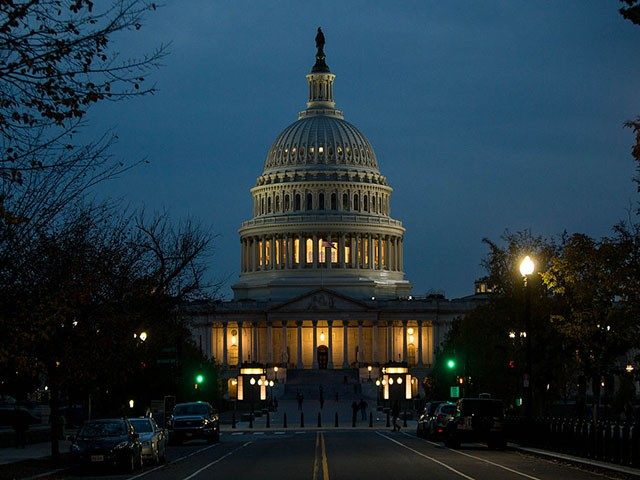The Congressional Budget Office (CBO) released updated budget projections on Wednesday incorporating interest costs on federal debt that are already out of date.
In CBO’s new projections, updated to show the effects of the recent budget deal, the interest rate on 3-month Treasury bills falls from 2.3 percent in the first half of 2019 to 2.1 percent by the end of the year. But on Tuesday, the yield on 3-month Treasury bills was lower, at 1.94 percent. Indeed, no maturity of a U.S. Treasury–going all the way out to 30 years–had a yield 2.1 percent. The 30-year Treasury bond was yielded 2.04 percent the day before the CBO report was published.
Getting interest rates right is important for the CBO’s budget projections because interest payments play a large role in the CBO’s deficit projections. The latest report projections $5.8 trillion of interest payments over the next decade.
According to the CBO, primary deficits—that is, deficits excluding interest payments—are projected to decrease over time, averaging 2.7 percent of GDP from 2020 through 2024 and 2.2 percent from 2025 through 2029. But because of projected increases in interest rates and federal borrowing, interest payments keeping, from 1.8 percent of GDP in 2020 to 2.6 percent in 2029.
In other words, the projected growth of deficits is driven by the projected rise in interest rates. And that, in turn, slows the economy because rising interest costs increase interest payments to foreign debt holders and thus reduce the income of U.S. households by increasing amounts.
Yet the CBO’s report appears to be contradicted by evidence from financial markets. The CBO says it expects the Federal Reserve to maintain its current target range for the federal funds rate through most of 2020 and then increase that range at the end of next year, which would put upward pressure on other interest rates.
The fed funds futures market, however, currently assigns a zero percent chance that the Fed will maintain its current target range of 2.0 to 2.25 percent through the end of this year, much less 2020. Indeed, by the January 2020 meeting, futures forecast a 24 percent chance that rates will be a full percentage point lower, at 1.00 to 1.25 percent, and around a 45 percent chance that it will be 1.25 to 1.50.
The yield curve, the difference between the yield on long-term and short-term bonds, recently inverted. That’s a sign that investors are convinced that the Fed will have to cut rates sharply in the future. The CBO report makes no mention of this event.
The CBO report did lower its forecast for near term interest rates and long-term interest costs from its April report. This change knocked $1.1 trillion in the agency’s projections of interest costs over the next decade. The actual figure could be far lower than projected, however, if interest rates continue to undershoot the CBO projection.
The CBO projections are based on the assumption higher levels of federal debt push up interest rates. If that assumption were to prove incorrect, the budget of the U.S. government would look very different than what the CBO forecasts.

COMMENTS
Please let us know if you're having issues with commenting.